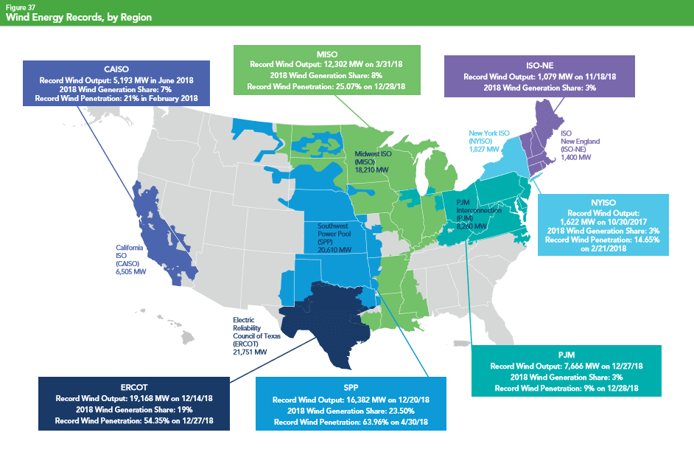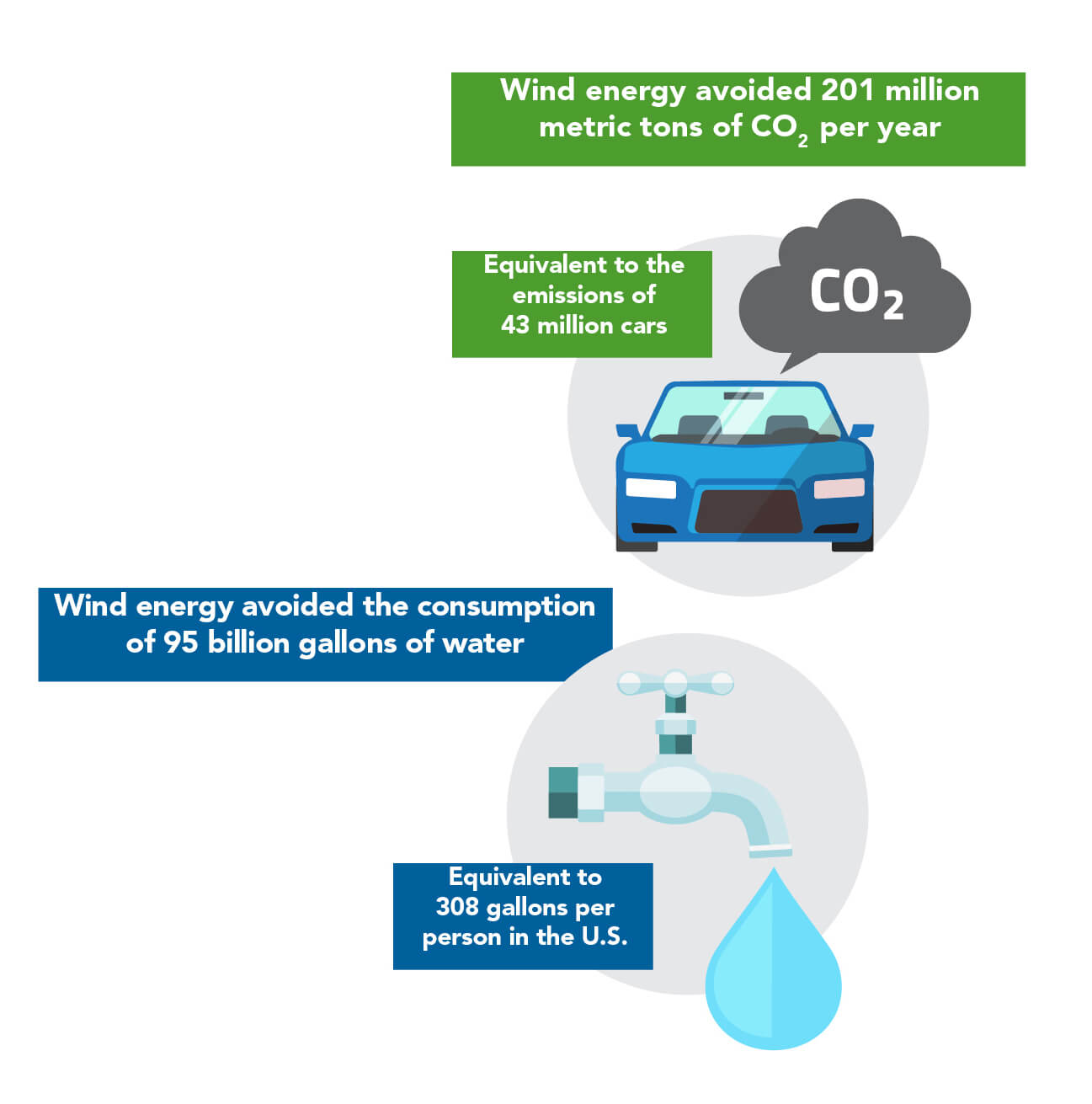AWEA Annual Market Report: Top 11 wind power trends in 2018
Today, AWEA released its U.S. Wind Industry Annual Market Report, Year Ending 2018. It’s a historic time for American Wind power—our industry has never been busier.
Robust demand, record low costs, innovative turbine technology, and consumer preferences are propelling wind to new heights. Strong wind project construction, a maturing manufacturing sector, and the increasing need for wind turbine technicians and operators mean wind jobs grew 8 percent in 2018– a record 114,000 men and women now work in wind.
Technology advances resulted in more productive turbines, with recent turbine installations achieving average capacity factors over 40 percent while costs continued to fall. And wind generation is on a record-setting spree in organized electricity markets—all of which experienced new wind generation records in 2018.
There’s much more to come, with over 35 gigawatts (GW) of wind projects under construction or in advanced development. That’s like building out Texas and Iowa, the country’s long-time wind leaders, all over again.
Here are the top 11 wind industry trends in 2018.
WIND ENERGY BENEFITS EVERY STATE
Under the 116th U.S. Congress, wind projects or wind-related manufacturing facilities are present in 69 percent of U.S. congressional districts, including 78 percent of Republican districts and 62 percent of Democratic districts. With a footprint in all 50 states, the wind industry supports local economic development, investing more than $12 billion in new wind projects in 2018, employing a record 114,000 Americans, and paying over $1 billion to state/local governments and private landowners in tax and lease payments.
WIND SUPPORTS ECONOMIC DEVELOPMENT
The U.S. wind industry is an important economic development driver, especially in rural areas. Every year, wind pays over $1 billion to state and local governments and private landowners, including $761 million in state and local tax payments. The wind projects installed in 2018 represent more than $12 billion in new investment.
CORPORATIONS BUY RECORD AMOUNT OF WIND POWER
Thirty-seven corporations, including 21 first-time buyers, signed wind energy contracts totaling a record 4,203 MW in 2018. Cumulatively, C&I purchasers have signed contracts for more than 11,300 MW of wind power, more than all of the wind installed to date in Iowa, America’s number two wind state. In doing so, companies cite declining costs and the stable price of wind power as driving factors for seeking out wind power contracts.
 ELECTRICITY MARKETS SET WIND RECORDS
ELECTRICITY MARKETS SET WIND RECORDS
Wind delivered 24 percent and 19 percent of the electricity generated in the Southwest Power Pool (SPP) and the Electric Reliability Council of Texas (ERCOT) respectively in 2018, setting new records in both markets.
Wind output records were set across the country in every regional transmission organization (RTO)/ independent system operator (ISO) at some point in 2018. ERCOT experienced the most wind output at a single point in time at over 19 GW, while SPP set the second highest mark at 16.3 GW.
 OFFSHORE WIND PIPELINE SWELLS
OFFSHORE WIND PIPELINE SWELLS
Improving project economics and establishing robust state policies led to a surge in offshore wind activity in 2018. At the end of the year, project developers had a potential offshore wind pipeline of over 25,500 MW. Project developers expect six offshore wind projects totaling 2,101 MW to be operational by 2023.
WIND POWERS AMERICA
Wind energy now delivers over 20 percent of the electricity produced in each of the following six states: Kansas, Iowa, Oklahoma, North Dakota, South Dakota and Maine. In 2018, wind turbines generated 6.5 percent of the electricity delivered to consumers nationally. The U.S. now has enough installed wind capacity to power more than 30 million American homes.
WIND DEMAND REACHES NEW HEIGHTS
Utilities and commercial and industrial (C&I) customers signed contracts for a record amount of wind power in 2018. Announcements for the year totaled 8,457 MW. Utilities contracted over 4,300 MW of wind power—seeking to add the low cost, reliable resource to their generation mix— while strong interest from C&I customers drove record procurement of over 4,200 MW.
WIND POWER SET TO GROW 36 PERCENT
The near-term wind development pipeline grew 23 percent over 2017 to 35,135 MW at the end of 2018. Once complete, U.S. wind power capacity in operation will increase to over 131,000 MW and will be capable of generating enough electricity to power over 42 million American homes.
TECHNOLOGY INNOVATIONS DRIVE DOWN COSTS
The cost of wind energy dropped 69 percent between 2009 and 2018 as the industry continued to improve performance through new technologies. Improved siting techniques, more sophisticated controls systems, advanced operations and maintenance practices, and the ability of new turbines to reach stronger, steadier winds all helped boost energy production and lower costs.
WIND DELIVERS ENVIRONMENTAL BENEFITS
Wind energy generation avoids over 200 million metric tons of CO2 annually—equal to 11 percent of U.S. power sector emissions. In 2018 alone, wind energy avoided $9.4 billion in public health impacts by cutting air pollution that triggers asthma attacks and creates smog. Meanwhile, operating wind projects avoided the consumption of 101 billion gallons of water, equivalent to 308 gallons per person in the U.S.
 WIND SUPPORTS DOMESTIC MANUFACTURING
WIND SUPPORTS DOMESTIC MANUFACTURING
Wind energy supports a thriving domestic manufacturing sector with over 500 factories in 42 states producing components for the industry. At the end of 2018, the wind industry supplied 24,000 manufacturing and supply chain jobs.








